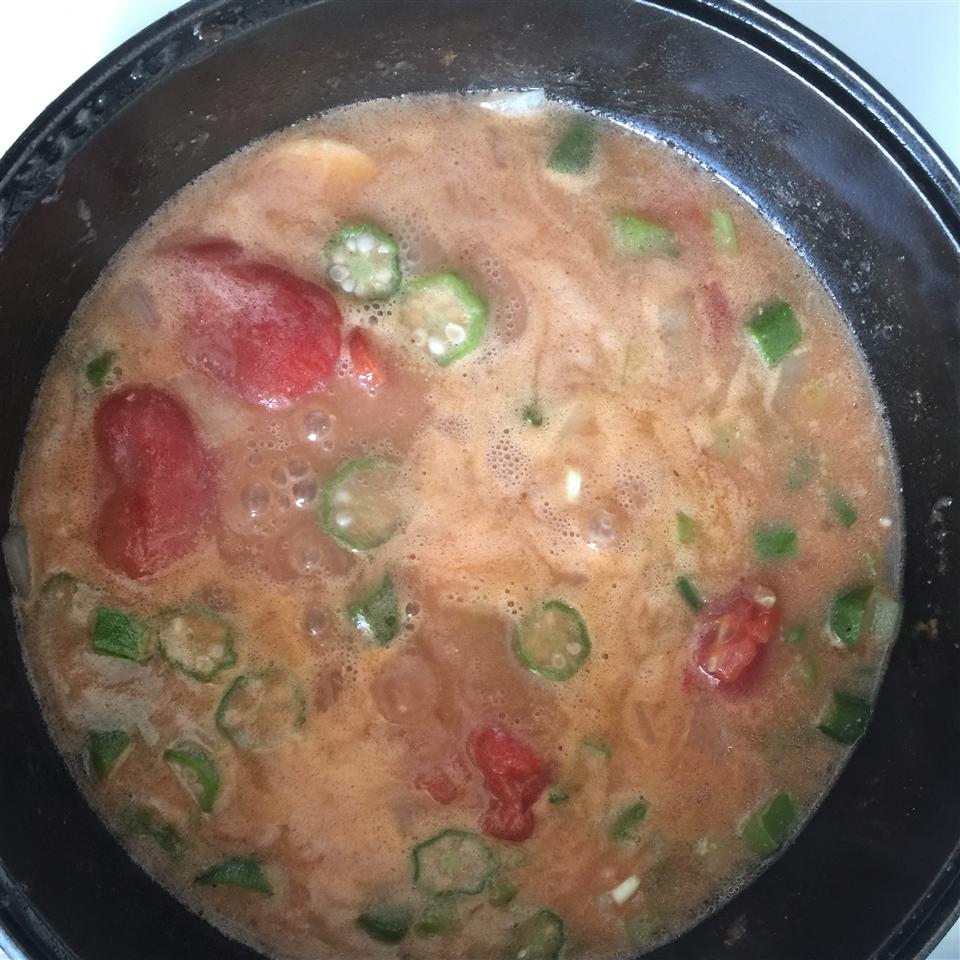Louisiana Shrimp and Eggs Gumbo

I was introduced to gumbo by people from Louisiana. They lived in our town for a few years, and taught us Canadians what gumbo is all about….mmmm good and hot! You can make other gumbos the same way using squirrel, rabbit, ham, seafood, chicken, or game.
INGRIDIENT
DIRECTION
Step: 1
Heat oil in a Dutch oven or any heavy pan. Stir in flour to make a roux. Cook, stirring constantly, until roux is dark brown; be careful not to burn. Add onion and garlic, and cook until slightly wilted. Whisk in water.
Step: 2
Stir in celery, green onions, tomato, green and red peppers, okra, bay leaf, thyme, salt, pepper, and cayenne. Simmer for 1 hour.
Step: 3
Add shrimp and hard boiled eggs; simmer 15 to 20 minutes longer. Adjust seasoning to taste. Serve gumbo over rice.
NUTRITION FACT
Per Serving: 490 calories; protein 33g; carbohydrates 35.5g; fat 23.5g; cholesterol 439.8mg; sodium 335.7mg.
The word “stew” can process to 2 time a food and a make dishes method. Stewing involves not fast cooking chunks of meat, vegetables or beans in a flavorful water based . It’s same as to braising, instead it does have a few notable differences. The meat is chopped into smaller pieces but of being cooked whole , and the liquid all of it covers the essential in a stew as different to a braise’s halfway all of it . When meat or vegetables are cooked using this method, the resulting dish is called stew.
Stew has a reputation for making a rib-sticking eating process that comfortable you up on a freezing , winter day. It’s true ; a bowl of classic beef stew can make warming featured food , but stew’s comfort factor goes way beyond preserving you from the chill . It’s all about those soft and chunks of meat and vegetables, swimming in a thick, ultra-rich gravy. The more they come together make the ultimate comfort food, no matter the weather.





